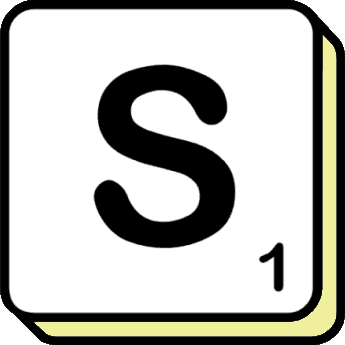Unlocking the World of Characters: A Journey Through Unicode and Character Encoding
Author: Brian Bowman
Date Published: 31 October 2023
In the vast realm of letters, words, and language, the underlying foundation that allows us to communicate across diverse scripts, languages, and writing systems is often taken for granted. This foundation is none other than Unicode and character encoding. This blog article will take you on a fascinating journey through the world of Unicode and character encoding, exploring how they shape the way we interact with text in our digital age.

Part 1: The Evolution of Character Encoding
From Bits to Bytes: The Early Days
Before Unicode came into existence, there were multiple character encoding systems in use. In the early days of computing, these systems represented text using a limited set of characters, usually in the range of 7 or 8 bits. ASCII (American Standard Code for Information Interchange) was one of the earliest and most widely used character encodings. It provided a basic set of 128 characters, including letters, numbers, and common symbols.
However, ASCII had limitations. It primarily catered to the English language and couldn't accommodate the rich diversity of languages and scripts across the globe. This limitation led to the need for a more inclusive and comprehensive character encoding standard.
Enter Unicode: The Universal Character Set
Unicode, introduced in the 1990s, revolutionized the world of character encoding. It aimed to provide a unified system for representing characters from all the world's languages and scripts. Unlike the 7 or 8-bit encodings of the past, Unicode used a variable-length encoding, allowing it to represent a vast number of characters. It initially aimed to cover over 65,000 characters but has since expanded to encompass more than 143,000 characters.
Unicode goes beyond the alphabets of major languages to include symbols, emojis, mathematical notations, and even obscure and historical scripts. It truly lives up to its name as the "Universal Character Set."
Part 2: The Mechanics of Unicode
UTF-8, UTF-16, and UTF-32: Encoding Schemes
Unicode offers multiple encoding schemes to represent its vast character repertoire. The most commonly used encoding schemes are UTF-8, UTF-16, and UTF-32.
UTF-8: This encoding is variable-length, which means it uses 8, 16, or 24 bits per character, depending on the character's code point. It is efficient for representing characters in the ASCII range (0-127) because it uses only 8 bits for these characters. UTF-8 is the most widely used encoding on the internet and in modern software due to its compactness and compatibility with ASCII.
UTF-16: UTF-16 uses 16 bits per character and is commonly used in software development. It can represent characters beyond the BMP (Basic Multilingual Plane), which includes characters from scripts like Chinese, Japanese, and Korean. However, it can be less efficient in terms of storage for characters in the BMP.
UTF-32: UTF-32 uses a fixed 32 bits per character, which simplifies many text-processing operations. However, it is less space-efficient than UTF-8 and UTF-16.
Code Points and Glyphs
Unicode assigns a unique code point to each character in its repertoire. A code point is a numeric value that serves as an identifier for a particular character. For example, the code point for the letter "A" is U+0041.
It's important to note that a code point is not the same as a glyph. A glyph is the visual representation of a character. For instance, the letter "A" can be represented by different glyphs in various fonts, but its Unicode code point remains the same.
Part 3: Practical Implications of Unicode
Multilingual Support
Unicode's universality has had a profound impact on software, enabling it to support multiple languages effortlessly. Modern operating systems, web browsers, and word processors can seamlessly display and input text in various languages and scripts. This is a monumental achievement in bridging linguistic and cultural divides.
Emoji Revolution
Unicode also brought about the emoji revolution. Emojis are small pictorial symbols used to convey emotions, expressions, and concepts in digital communication. Unicode standardizes these emojis, allowing them to be used consistently across different platforms and devices.
Preserving Cultural Heritage
One of the less-known but crucial aspects of Unicode is its role in preserving cultural heritage. Unicode includes scripts that are no longer in common use but are essential for historical and scholarly purposes. It ensures that ancient scripts and languages are not lost to time.
Part 4: Challenges and Future of Unicode
Character Encodings in a Globalized World
As our world becomes more interconnected, the demand for robust character encoding systems continues to grow. Ensuring that languages, scripts, and characters from around the world are adequately represented in digital communication is an ongoing challenge.
Security and Compatibility
Character encoding plays a significant role in cybersecurity. Issues such as character encoding attacks and homograph attacks underscore the importance of secure character handling. Additionally, maintaining backward compatibility with legacy encodings is a complex endeavor.
The Expanding Universe of Characters
Unicode continues to expand to include new characters and symbols, reflecting the evolving needs of our digital society. Keeping up with these additions and ensuring that they are implemented correctly in software is an ongoing task for developers and Unicode Consortium.
Conclusion
Unicode and character encoding are the unsung heroes of our digital age, enabling us to communicate across linguistic and cultural barriers effortlessly. From the evolution of character encoding systems to the practical implications in our daily lives, Unicode has transformed the way we interact with letters, words, and languages. As technology advances and our world becomes more interconnected, the role of Unicode in preserving and enhancing our global linguistic diversity will remain indispensable. It's a testament to the power of human language and our ability to bridge divides through technology.
